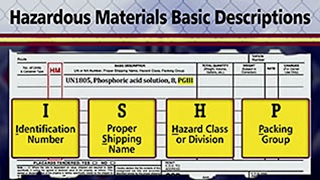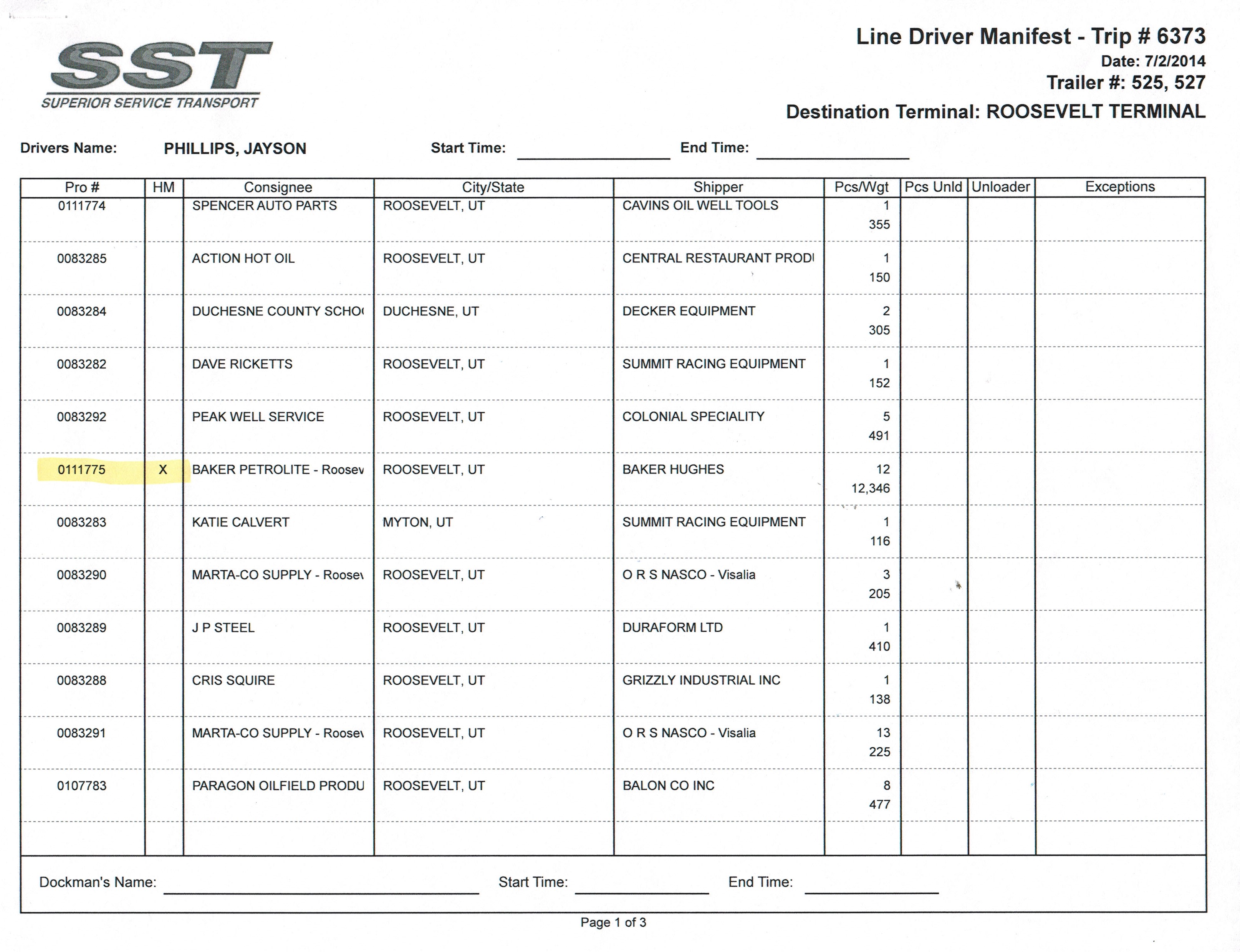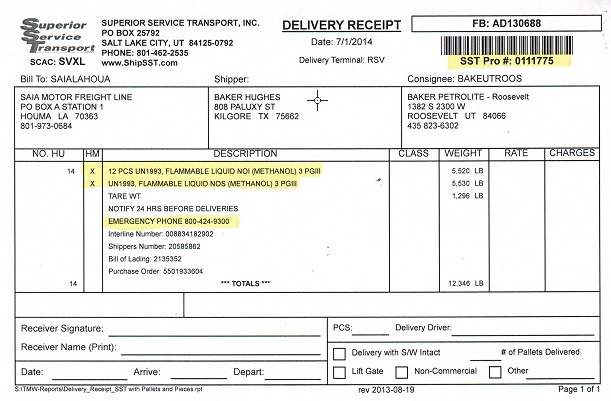
Main Office (801) 462-2535
Main FAX (801) 972-1550
Dispatch FAX (801) 972-1557
SST Safety Courses - HazMat
Course B: Hazardous Materials Paperwork
It has been said that nothing moves without paperwork, and that certainly applies to
hazardous materials transportation. Properly completed paperwork is necessary for the carrier to know how to
placard a load. It is essential for first responders when they are required to get involved in a damaged shipment
or a fire involving hazardous materials. Government agencies also need access to properly filled out HazMat
paperwork. This section of the HazMat training modules will cover the proper completion and use of HazMat paperwork.
Though the shipper is required to fill out the BOL completely and accurately, it is the driver's responsibility
who picks up the shipment, to check the associated paperwork to determine that all necessary information is included
on the document(s) and in the proper order.
First, the shipper must certify that the shipment
was packaged and labeled according to the applicable regulations. This is done by the shipper
signing the "Shipper Certification" which is the highlighted section near the bottom of the BOL
shown in this example (not all BOLs will have this section highlighted).
The shipper must also provide an emergency telephone number for this HazMat shipment
in case of a spill or other emergency. According to the regulations this number must be staffed by
a person authorized or otherwise capable of handling an emergency situation generated by the HazMat.
The driver picking up the shipment must verify this section to assure it is completed correctly.
The Department of Transportation has dictated that there is only one acceptable order
for listing the information required in the description section of the shipping papers. That order is
as follows:
The UN identification number. This is a number assigned to a particular chemical and is recognized world wide. For example, UN 2974 is "Batteries Wet Filled with Acid" no matter what country it is shipped to or from.
The proper shipping name. This is found in the Table of Hazardous Materials and Special Provisions produced by the DOT, which contains all of the necessary information for all chemicals shipped in this country.
The hazard class. This number is also found in the Table of Hazardous Materials. If there is a secondary hazard that must be labeled and identified it must be listed next to the primary hazard class in parenthesis.
The packing group. Packing group numbers are shown in Roman numerals and indicate the type of packaging required as well as the level of danger of the product. Group I indicates high danger. Packing group II indicates medium danger and group III indicates the lowest level of danger. After the packing group, other information pertinent to the shipment can be listed like zones for inhalation hazards, reportable quantities, etc.
The weight or mass of the shipment.
For example, here is the order on a typical BOL.

This same information is required for other documents such as Delivery Receipts.
Manifests require that the HazMat shipment only be identified as with a check mark in the column, but then must be accompanied by the appropriate shipping papers that contain the complete information as shown in the example below.

For SST DR's the correct notation is an X in the "HM" column.

Any time a driver is transporting a HazMat shipment, the paperwork must be within his or her reach while seat belted in and operating the vehicle containing the shipment. Any time the driver leaves the vehicle the paperwork must be left on the seat or in the driver side door pouch/slot. Drivers must also maintain the HazMat paperwork on the top of their stack of papers or otherwise indicate where the papers are (i.e.: using tabs to make the papers stand out) so that they are readily identifiable to first responders or inspectors.
The following image demonstrates a correct Bill of Lading for a shipment of hazardous materials.

Click here to print this sample BOL.
In addition to listing everything in the description properly, the shipper must indicate that the shipment is a hazardous materials shipment by: Putting an X in the HAZMAT column, printing the HazMat information in a different color, highlighting the shipment description in a different color or otherwise causing the shipment to standout from the other shipments that may be on the same BOL. RQ, indicating Reportable Quantity can be used in place of an X in the HAZMAT column.
If the letters N.O.S. are used in the proper shipping name (Not Otherwise Specified) then a specific chemical name or description must follow the information contained in the description section of the BOL. A good example of this is on the delivery receipt shown above for a shipment to Baker Hughes in Roosevelt of "Flammable Liquid NOS". This proper shipping name is followed by (Methanol), Which is the specific name of the chemical.